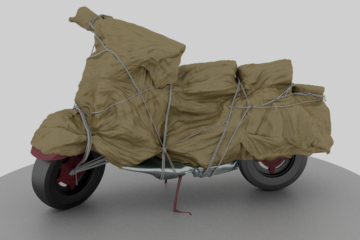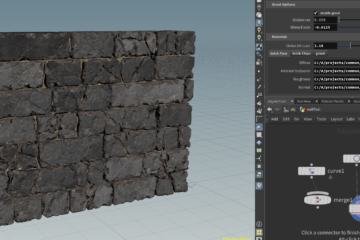Pierre Bézier and his curves
The mathematical basis for Bézier curves—the Bernstein polynomial—had been known since 1912, but the polynomials were not applied to graphics until some 50 years later, when they were widely publicised by the French engineer Pierre Bézier, who used them to design automobile bodies at Renault. The study of these curves was however first developed in 1959 by mathematician Paul de Casteljau using de Casteljau’s algorithm, a numerically stable method to evaluate Bézier curves at Citroën, another French automaker.
Bézier curves are also used in the time domain, particularly in animation, user interface design and smoothing cursor trajectory in eye gaze controlled interfaces.For example, a Bézier curve can be used to specify the velocity over time of an object such as an icon moving from A to B, rather than simply moving at a fixed number of pixels per step. When animators or interfacedesigners talk about the “physics” or “feel” of an operation, they may be referring to the particular Bézier curve used to control the velocity over time of the move in question.
Ivan Sutherland
is an American computer scientistand Internet pioneer, widely regarded as the “father of computer graphics.” His early work in computer graphics as well as his teaching with David C. Evans in that subject at the University of Utah in the 1970s was pioneering in the field. Sutherland, Evans, and his students from that era invented several foundations of modern computer graphics. He received the Turing Award from the Association for Computing Machinery in 1988 for the invention of Sketchpad, an early predecessor to the sort of graphical user interface that has become ubiquitous in personal computers. He is a member of the National Academy of Engineering, as well as the National Academy of Sciences among many other major awards. In 2012 he was awarded the Kyoto Prize in Advanced Technology for “pioneering achievements in the development of computer graphics and interactive interfaces”.
Ed Catmull
Edwin Catmull was born in Parkersburg, West Virginia. His family later moved to Utah, where Catmull’s father first served as principal of Granite High School, then Taylorsville High School. Raised in a Mormon family, Catmull was the oldest of five and as a young man served as a missionary to the New York City area in the 1960s. Early in life, Catmull found inspiration in Disney movies such as Peter Pan and Pinocchio and dreamed of becoming a feature film animator. He even made animation using flip-books. However, he assessed his chances realistically and decided that his talents lay elsewhere. Instead of pursuing a career in the movie industry, he used his talent in math and studied physics and computer science at the University of Utah. After graduating, he worked as a computer programmer at The Boeing Company in Seattle for a short period of time and also at the New York Institute of Technology, before returning to Utah to go to graduate school in fall of 1970.
Back at the university, he became one of Ivan Sutherland’s students and part of the university’s ARPA program, sharing classes with Fred Parke, James H. Clark, John Warnock and Alan Kay. Catmull saw Sutherland’s computer drawing program Sketchpad and the new field of computer graphics in general as a major fundament in the future of animation, combining his love for both technology and animation, and decided to be a part of the revolution from the beginning. From that point, his main goal and ambition was to make a computer-animated movie.During his time there, he made two new fundamental computer-graphics discoveries: texture mapping, and bicubic patches; and invented algorithms for spatial anti-aliasing and refining subdivision surfaces. He also independently discovered Z-buffering, even though it had already been described 8 months before by Wolfgang Straßer in his PhD thesis. In 1972, Catmull made his earliest contribution to the film industry: an animated version of his left hand which was eventually picked up by a Hollywood producer and incorporated in the 1976 movie Futureworld, the science-fiction sequel to the film Westworld and the first film to use 3D computer graphics. The sequence, known simply as A Computer Animated Hand, was selected for preservation in the National Film Registry of the Library of Congress in December 2011.


